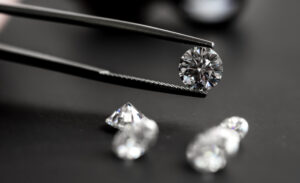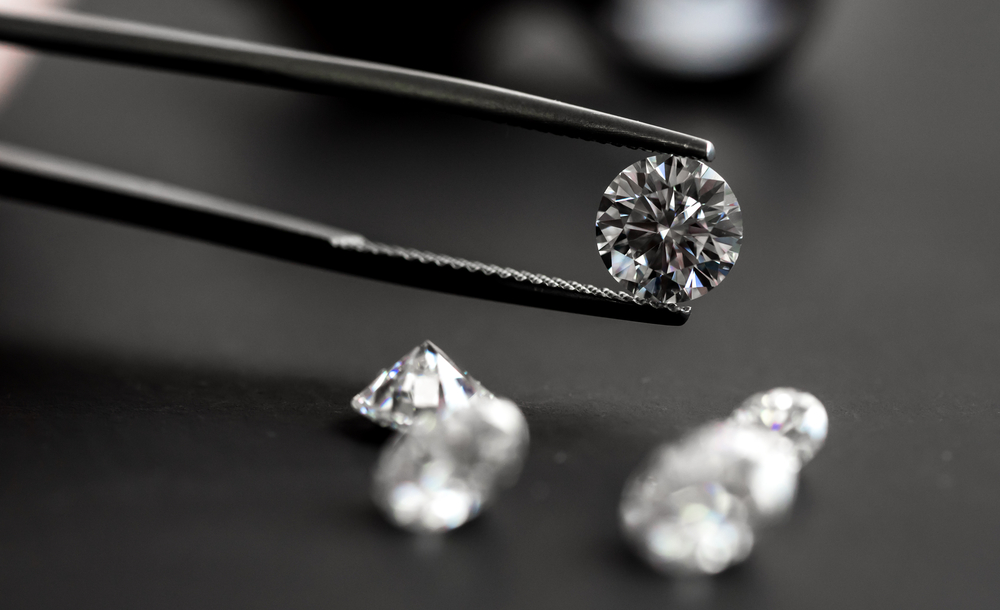
The creation of lab-grown diamonds is a fascinating scientific process that marries advanced technology with the allure of nature’s most coveted gemstone. If you’ve ever wondered about the journey from a tiny seed to a sparkling diamond, let’s delve into the science behind the creation of lab-grown diamonds and explore the intricate steps that bring these brilliant gems to life.
1. Seed Selection: The Starting Point of Brilliance
The process begins with the selection of a tiny diamond seed crystal. This seed will serve as the foundation for the growth of the lab-grown diamond. The choice of seed is crucial, as it influences the characteristics of the final diamond. Once selected, the seed is placed in a high-pressure, high-temperature (HPHT) or chemical vapor deposition (CVD) environment to initiate the growth process.
2. High-Pressure, High-Temperature (HPHT) Method: Mimicking Earth’s Forces
In the HPHT method, the seed crystal is subjected to extreme pressure and high temperatures that replicate the conditions deep within the Earth where natural diamonds form. A carbon-rich gas is introduced, and the carbon atoms crystallize on the seed, layer by layer, gradually building up the structure of the diamond. This controlled environment allows for the precise manipulation of growth conditions, resulting in diamonds with exceptional clarity and quality.
3. Chemical Vapor Deposition (CVD) Method: Gas to Gem Transformation
The CVD method involves a different approach to diamond growth. In this process, a hydrocarbon gas, typically methane, is introduced into a chamber along with a carbon source. The gases are activated, and carbon atoms are deposited onto the diamond seed, gradually forming the diamond structure. The CVD method allows for more control over the growth process and is known for producing diamonds with specific characteristics, including large sizes and unique shapes.
4. Diamond Nurturing: Patience in Precision
Regardless of the method used, the growth of a lab-grown diamond requires time and precision. The diamond is nurtured over weeks or months, allowing it to develop into a crystal of the desired size and quality. Throughout this period, the growth conditions are carefully maintained to ensure optimal diamond formation and minimize any imperfections.
5. Cutting and Polishing: Crafting Brilliance
Once the lab-grown diamond has reached its desired size, it undergoes the same cutting and polishing process as natural diamonds. Skilled artisans use their expertise to unlock the maximum brilliance and fire within the diamond. The cut is a critical factor in determining the final appearance of the diamond, affecting its sparkle and overall beauty. maximum brilliance and fire within the diamond. The cut is a critical factor in determining the final appearance of the diamond, affecting its sparkle and overall maximum brilliance and fire within the diam
6. Grading and Certification: Quality Assurance
Lab-grown diamonds, like their mined counterparts, undergo rigorous grading and certification processes. Gemological laboratories evaluate the cut, color, clarity, and carat weight of each diamond, providing a comprehensive report that details its characteristics. This transparency ensures that consumers can make informed choices based on the quality and value of the lab-grown diamonds they select.
7. Eco-Friendly Brilliance: The Sustainable Advantage
One of the notable advantages of lab-grown diamonds is their eco-friendly footprint. Unlike traditional diamond mining, which can have significant environmental impacts, lab-grown diamonds minimize habitat disruption, water usage, and carbon emissions. The sustainable nature of lab-grown diamonds aligns with the growing demand for ethical and responsible choices in the jewelry industry.
Conclusion: Bridging Nature and Technology for Timeless Beauty
The science of creating lab-grown diamonds is a testament to the marriage of technological innovation and the enduring allure of diamonds. From the meticulous selection of a seed crystal to the precision of growth methods, cutting, and certification, every step contributes to the creation of a sparkling gem that rivals its natural counterparts. Lab-grown diamonds not only showcase the brilliance of science but also offer a sustainable and ethical choice for those who seek the beauty of diamonds with a clear conscience.
